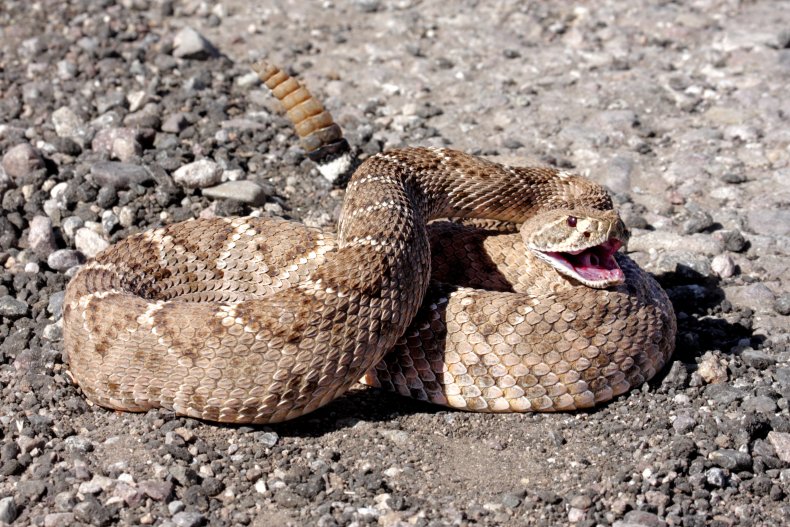A rattlesnake has been spotted taking a swim across a lake surface, terrifying tourists to the Lopez Lake Recreation Area.
Janet Harshbarger was one such visitor to the area, situated around halfway between Los Angeles and San Francisco. She caught the water-loving snake on video, uploading it to Facebook with the caption: “Beware paddle boarders, rattlesnakes in Lopez Lake.”
Comments under the video expressed dismay and horror at the sight, with one saying: “And that is why I would never get in that lake!”
Another commented: “Snakes can swim!?!?!? This is a new fear!”
Harshbarger identified the snake as a rattlesnake.
“I was driving (the) boat and husband notice something swimming across the water,” Harshbarger told local news outlet the San Luis Obispo Tribune. “We were just south of the marina in the ‘no wake’ zone. So we weren’t moving fast. We decided to circle it and see what kind of snake and sure enough, it was a rattlesnake.”
Seven different species of rattlesnakes can be found throughout California. All of these species are venomous, although rattlesnakes are rarely aggressive, only biting if they feel threatened or trapped. They are so-named for the rattle at the end of their tails made of keratin, the same material that our nails and hair are made from. When the snake vibrates their rattle, it makes a hissing noise designed to ward off threats.
ISTOCK / GETTY IMAGES PLUS
It is rare for these snakes to take a dip in the lakes.
“It’s not really common, but it does happen,” San Luis Obispo County park ranger Brian Wilder told the San Luis Obispo Tribune. “I think it’s probably a little more prevalent this year just because of the way that the lake (water level) came up so quickly—a lot of times they get displaced from their burrows underground. So a lot of times they end up swimming to try to find a place to go.”

ISTOCK / GETTY IMAGES PLUS
Swimming rattlesnakes also often keep their rattle aloft out of the water to keep it dry, as if it is dampened, it won’t rattle until it’s dried out again. Other snakes are also surprisingly strong swimmers, with copperheads and boa constrictors also occasionally taking a swim. There are also species of snakes that spend most of their lives in the water, such as the sea snakes of the tropical Indian and Pacific Ocean.
Rattlesnake bites are very dangerous, as rattlesnakes have some of the most toxic venom of any snake species, containing hemotoxins that destroy tissue and lead to necrosis and disrupted blood clotting, as well as neurotoxins that cause paralysis.
Bite victims will experience severe pain at the bite site, as well as weakness, nausea and vomiting, and hemorrhaging. However, if antivenom is given swiftly, a bite victim will likely recover.
Death from snake bites is luckily unlikely, as of the roughly 8,000 total snakebite victims across the U.S. each year, around 10 to 15 people die. According to the California Poison Control Center, around 800 of those bites are from rattlesnakes, resulting in one to two deaths each year.
Do you have a tip on a science story that Newsweek should be covering? Do you have a question about rattlensnakes? Let us know via [email protected].


